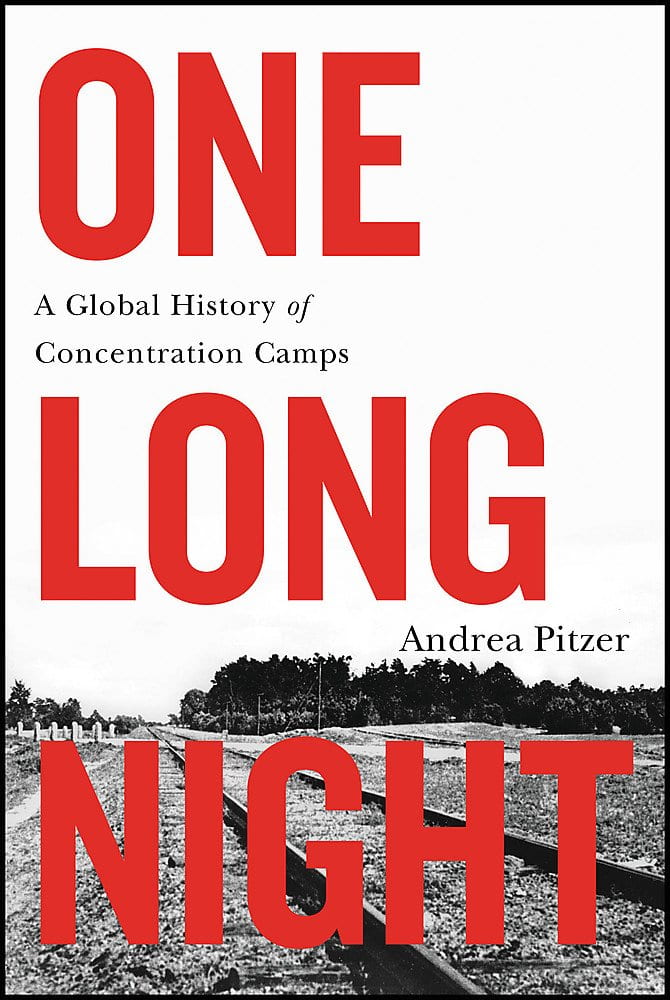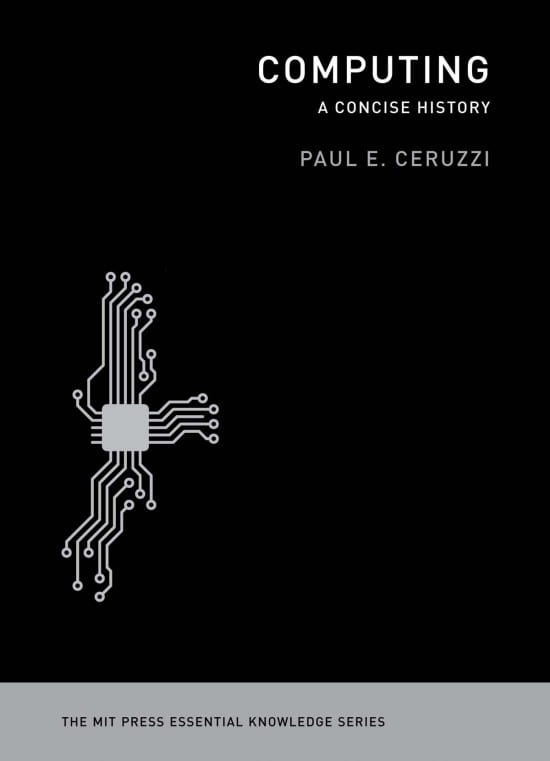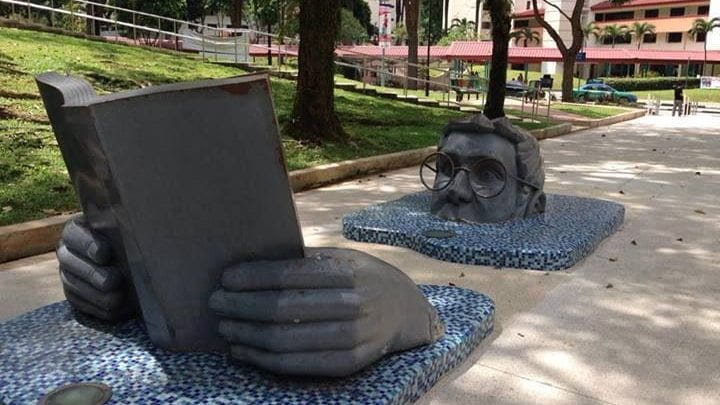More reading recommendations from our editorial team to kick off the academic year
Jonathon
In 1986, the conservative German historian Ernst Nolte fired the first shots of the Historikerstreit (historians’ debate) with his article, “The Past That Will Not Pass: A Speech That Could Be Written but Not Delivered.” Nolte notoriously challenged the “negative myth” that the Holocaust was a unique event, and hence that Germans are uniquely responsible for it. National Socialism, he wrote, was a defensive reaction to the “class genocide” and “Asiatic barbarism” of the Bolsheviks. This incendiary interpretation, which whitewashed German guilt for the genocide of European Jewry, unleashed a far larger wave of criticism from liberals and leftists, notably Jürgen Habermas. Habermas has recently taken a great deal of flak amidst the failures of public communication to produce rational consensus (Brexit was Raymond Geuss’s cutting example), but if there is one case that illustrates his theory it is the depth of Holocaust consciousness in contemporary Germany. What then seemed an alarming slide into apologetic historical relativism now appears, with the passing of decades, as a crucial stage in Germany’s ongoing Vergangenheitsaufarbeitung, its working upon the Nazi past.
In the summer of 2019, America experienced its own historians’ debate about the labeling of migrant detention camps along America’s border with Mexico as “concentration camps.” On June 17, Representative Alexandria Ocasio-Cortez called the detention camps along the border “concentration camps” and invoked the iconic phrase “Never Again.” Following several conservative politicians, the U.S. Holocaust Memorial Museum released a statement claiming that it “unequivocally rejects efforts to create analogies between the Holocaust and other events, whether historical or contemporary.” Its website linked to an article by Edna Friedberg that argues that “it is especially dangerous to exploit the memory of the Holocaust as a rhetorical cudgel. We owe the survivors more than that.”

The most notable difference to the German debate thirty-some years prior is that virtually all American historians were in agreement: The Museum’s prohibition on historical comparison is ahistorical, politically motivated, and out of touch with current scholarship. Hundreds of scholars, including myself, signed an open letter in the New York Review of Books to this effect addressed to the Museum’s director, arguing that informed analogy and comparison are essential tools of the historian’s and the educator’s craft and that the slogan “never again” is incoherent without them. Banning “careful and responsible analysis, contextualization, comparison, and argumentation,” the letter reads, “makes learning from the past almost impossible.” “The very core of Holocaust education,” it contends, “is to alert the public to dangerous developments that facilitate human rights violations and pain and suffering; pointing to similarities across time and space is essential for this task.” Signatory Timothy Snyder went further in a pointed essay in Slate, arguing that the Museum’s unpopular position has “provided moral cover for ongoing and oppressive American policies” and “releases us from any obligation, as a nation, to self-criticism.” The first step of the Holocaust, Snyder reminds us, was the stigmatization and deportation of Jews who were not German citizens. “Analogizing is not some mysterious operation,” he writes, “It is how we think.” Without the critical work of detecting historical patterns, he argues, “‘never again’ becomes its own opposite: ‘It can’t happen here.’” As Joshua Shanes similarly wrote in Haaretz, “the Holocaust is not a myth; it was a complex crime that evolved over many years and was executed by real human beings, based on motives that still animate people today.”

The historical counterargument to the Museum’s position is quite simple. As the Jewish historian Anna Lind-Guzik put it, “the Nazis did not invent concentration camps, nor did the practice of building them end with the Third Reich.” Ocasio-Cortez had in fact done her homework. She responded to her critics by citing the work of Andrea Pitzer, author One Long Night: A Global History of Concentration Camps (2017). Pitzer defines concentration camps broadly as “mass detention of civilians without trial.” Much of the confusion in this debate stems from ignorance about the crucial distinction between “concentration camps” (the Nazis built thousands), which contained political prisoners and occupied populations as well as Jews and often served as labor camps, and the six “extermination camps” (also known as “death camps” or “killing centers”) including Auschwitz-Birkenau, which murdered millions of Jews by poison gas, and to this day constitute an atrocity unparalleled in history. Decades before iconic Nazi concentration camps like Dachau, the concentration camp made a global debut in colonial contexts. The Spanish colonial policy of “reconcentración” deployed concentration camps in Cuba in 1895. The United States used outrage over their degrading conditions as a pretext to invade Cuba a few years later. The American empire then employed concentration camps—called by this name—in the Philippines in 1901 and then used them to imprison Japanese Americans during World War Two. British forces used concentration camps to contain Boer civilians in South Africa in 1900, as did German forces in Namibia from 1904 to 1907 to contain indigenous Herero and Nama people. By 1915, after the outbreak of World War One, Pitzer writes, “concentration camps soon flourished around the globe: in France, Russia, Turkey, Austro-Hungary, Brazil, Japan, China, India, Haiti, Cuba, Singapore, Siam, New Zealand, and many other locations. Over time, concentration camps would become a tool in the arsenal of nearly every country.” Pitzer also weighed in on the current debate, contending that “the United States now has a vast and growing camp system,” from Guantanamo to the border camps, and arguing that history shows that “the longer a camp system stays open, the more likely it is that vital things will go wrong.”
Across the country, activists, led by progressive Jewish organizations, have reactivated the memory of the Holocaust in the service of human rights for migrants. In recent protests of ICE raids and the miserable conditions in detention camps, one can see signs bearing the slogans “never again means never again for everyone,” “never again means close the camps,” and “never again is now.” These pithy phrases articulate a deeper moral intuition with a long history that has been analyzed in several recent publications. As the historian Emma Kuby, the author of Political Survivors: The Resistance, the Cold War, and the Fight against Concentration Camps After 1945 (Cornell, 2019), recently wrote in Dissent, the Nazis possess no “historical monopoly” on the use of concentration camps and, “even more to the point, Nazi camp survivors themselves have continually employed the language of ‘concentration camps’ for just such activist ends since the moment the Second World War ended.”
The eminent moral philosopher and German public intellectual Susan Neiman recently published Learning from the Germans: Race and the Memory of Evil (FSG, 2019), which explores German efforts to atone for Nazi atrocities—probing both successes and failures—in order to identify lessons for how America might come to terms with its own legacy of slavery and racism. Neiman draws upon her unique experience as a Jewish woman raised in the Jim Crow South, whose synagogue was firebombed by the KKK and whose parents became activists for desegregation and African-American civil rights in the 1960s. Having lived in Berlin for three decades, Neiman observed Germany’s coming to terms with its dark past, first as an outsider, and now as an insider in a public institution. To write this book, she returned to the South to interview politicians, activists, and contemporary witnesses whose perspectives she weaves into a compelling moral case for America to follow strategies of seeking justice, historical consciousness-raising, and public memorialization of crimes that have worked in Germany. A version of Nieman’s introduction was recently published in the New York Review of Books.
The thought of the German-Jewish critical theorist Theodor W. Adorno, who fled Germany for America during the Nazi period, also has much to add to contemporary discussions about the traces of the Holocaust, authoritiarianism, and fascism that live on or have been revived today. Peter E. Gordon recently penned a short piece in the New York Review of Books about the continued relevance of Adorno’s thought fifty years after his untimely death, in conjunction with the Adorno Lectures he recently delivered at the University of Frankfurt. He also wrote the introduction for a new edition of the massive empirical study Adorno co-wrote in America in the 1940s, The Authoritarian Personality, which has just been republished by Verso. Adorno lectured widely on antisemitism and right-wing radicalism from his return to Germany in 1949 and his death in 1969. A collection of these lectures and interviews is forthcoming from Suhrkamp. One especially relevant lecture, “Aspects of Contemporary Right-Wing Radicalism,” was recently released as a standalone pamphlet that currently tops the German bestseller chart for politics and is forthcoming in English from Polity. Adorno delivered this lecture to students in Vienna in 1967 shortly after the far-right National Democratic Party of Germany (NPD) won local seats in six state parliaments. Much of his analysis can still be applied to today’s right-wing movements such as Pegida and the Alternative for Germany (AfD), which, like the NPD, use propaganda to weaponize grievances in late capitalist society, including rising inequality, the displacements of globalization, declines in class and status, and technocratic de-democratization, and displace this anger onto demonized entities including immigrants, the European project, “socialism,” and their very societies as a whole. “Fascist movements,” Adorno said, are “the stigmata, the scars of a democracy… that does not quite live up to its own concept.” Right-wing radicalism, for Adorno, is not the other of democracy, but a crisis phenomenon emerging from within the logic of liberal capitalist society. In the rise of contemporary demagoguery we still see the alarming power of its “unconscious wish for disaster, for catastrophe.”
Luna

Considering the growing popularity of Digital Humanities and the relevance that computational skills might have for future historical research, last month I started reading Paul Ceruzzi’s Computing: A Concise History in order to engage with computing technology from a historical perspective.
Although often taken for granted by the general audience, the history of computing is actually difficult to trace because it involves “the continuous convergence of different base technologies” (139). It spans across different countries, from Germany to England to the US, and involves research and developments in different disciplines, not only in mechanical engineering but also in physics, mathematics, and electronics. Furthermore, it is entangled with a multitude of political, economic, and aesthetic factors.
Paul Ceruzzi’s presentation of the history of digital technology begins in 1890 with the invention of early tabulators and describes how different technologies converged into devices that are able to perform automatic control, coded data storage, communication, and calculation by using electrical or electronic circuits. In the author’s view, in fact, these are the five attributes that define computers (9). In this concise and accessible overview of the invention and development of computing, the historian leads readers through this technological complexity, thus clarifying concepts which are often part of our daily life but whose meaning remains opaque for most of us: what do digital, analog, and even computer mean? What are the dynamics and histories that allow us to turn on our laptops and use them to connect to the internet? What is the difference between computing, computers, the Internet, wi-fi, Google, Twitter, and Facebook?
While theoretical reflections on the social implications of new media technologies often overlook technical aspects, Peruzzi provides in his work invaluable insights on the material features that characterize the different elements implied in the history of computing, from mainframe to personal computers to smartphones. He does so in a way that makes it accessible to what he calls “lay readers”.
This history helps readers learn to differentiate between concepts and objects that are to be distinguished both technically and historically. Thus, this book is a valuable resource for anyone interested in unravelling the entanglements of some of the technologies that we take for granted and allows a re-conceptualization of those recent and ongoing histories that continuously reshape our daily digital lives.




Leave a Reply